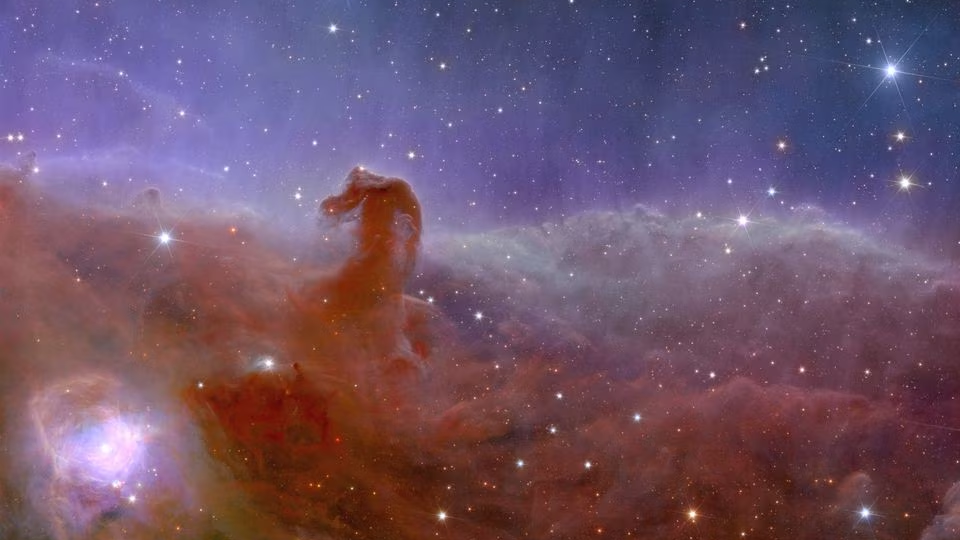
Stellar nursery called "Horsehead Nebula," also known as Barnard 33, and part of constellation Orion, captured by Euclid telescope are seen in this undated handout image. /Reuters
Stellar nursery called "Horsehead Nebula," also known as Barnard 33, and part of constellation Orion, captured by Euclid telescope are seen in this undated handout image. /Reuters
The first images from Europe's Euclid space telescope were released on Tuesday, revealing a stunning nebula resembling a horse's head, never-before-seen distant galaxies and swirling masses of stars in pristine detail.
The five images from Euclid, which was launched in July on a mission to investigate dark matter and dark energy, were "awe-inspiring and remind us of why it is essential that we go to space to learn more about the mysteries of the universe," European Space Agency chief Josef Aschbacher said in a statement.

A spiral-shaped galaxy called "Hidden Galaxy," also known as IC 342 or Cadwell 5, captured by Euclid telescope, is seen in this undated handout image. /Reuters
A spiral-shaped galaxy called "Hidden Galaxy," also known as IC 342 or Cadwell 5, captured by Euclid telescope, is seen in this undated handout image. /Reuters



